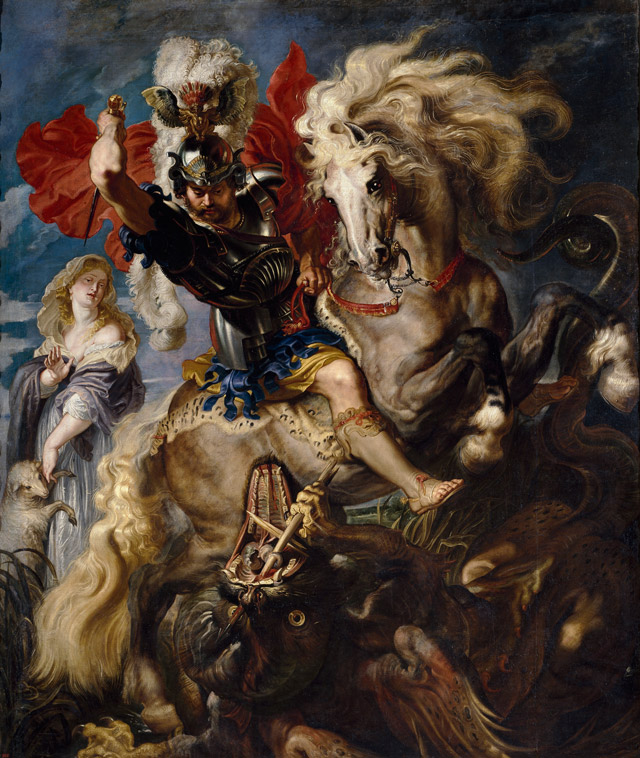Saint George and the Dragon
History

Saint George and the Dragon, 1606-1608, Peter Paul Rubens, Flemish, 1577-1640, oil on canvas, 121 x 181 in., © Museo Nacional del Prado.
By inserting sitters he meets on the streets—a process he calls “street casting”—into traditional European paintings, Kehinde Wiley reassigns the symbols of power and authority held by the aristocracy onto his contemporary subjects.
Kehinde Wiley draws on the 17th-century image of Saint George and the Dragon by Flemish artist Peter Paul Rubens.
In the medieval legend of Saint George and the dragon, the saint arrives in a foreign city to find it terrorized by a dragon—a creature which often symbolizes the devil in Christian legends. Saving the city’s princess, Saint George slays the dragon and, in their gratitude, converts the citizens of the city to Christianity.
Here Saint George is a muscular young black man, his arm raising a sword and his gaze directed defiantly towards the viewer—but the dragon is nowhere to be seen.

